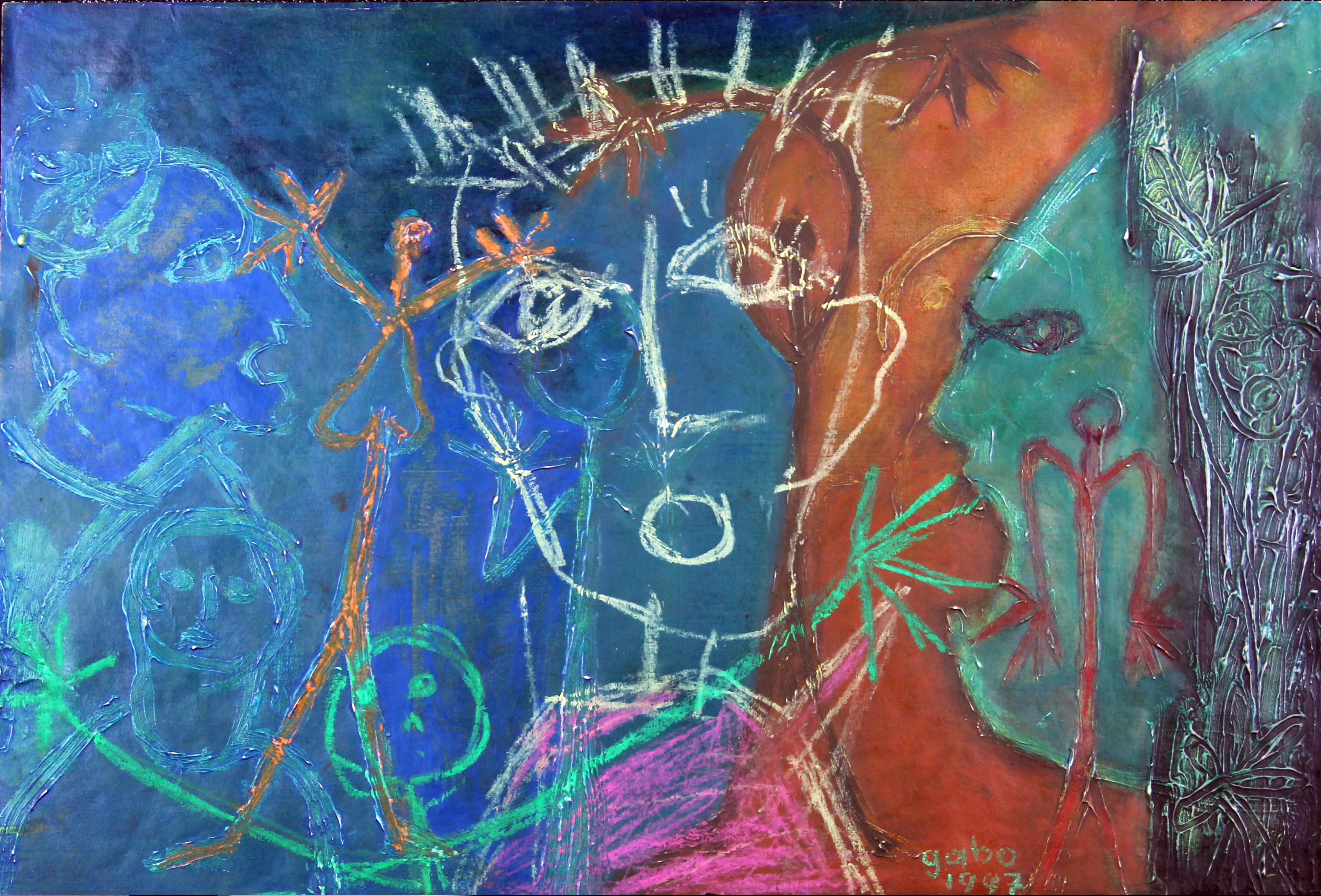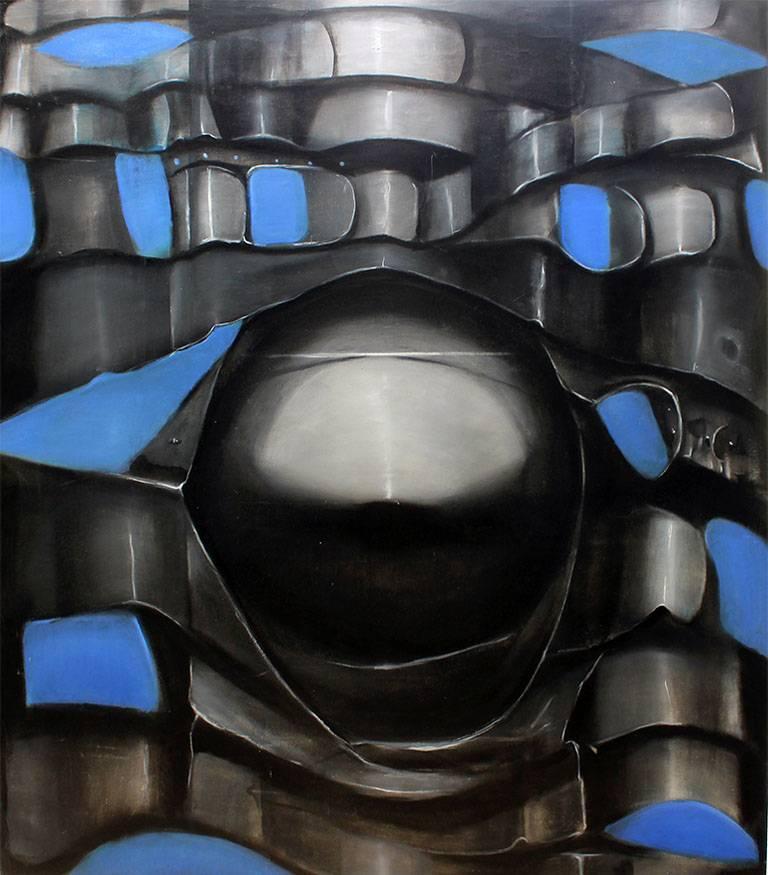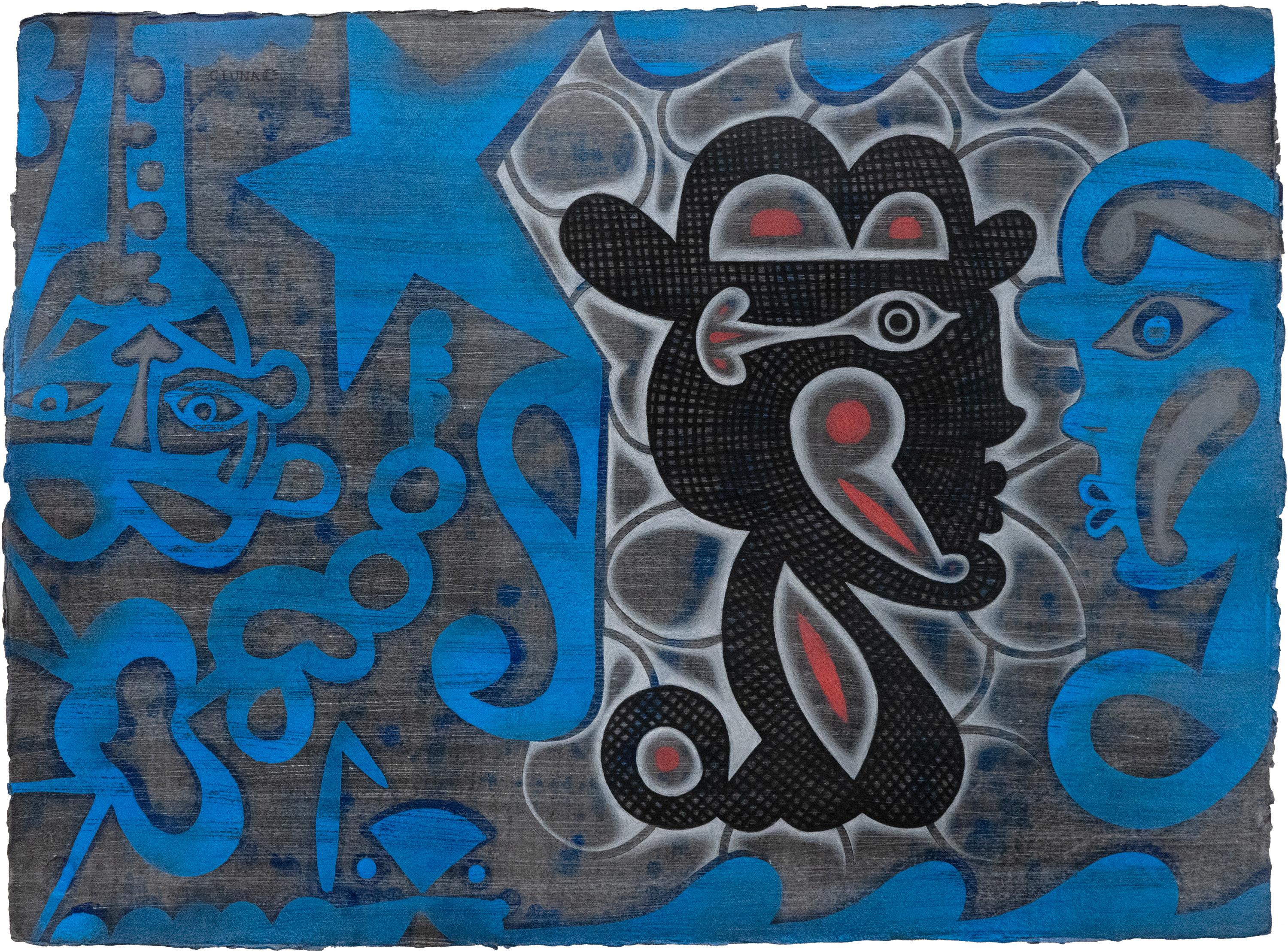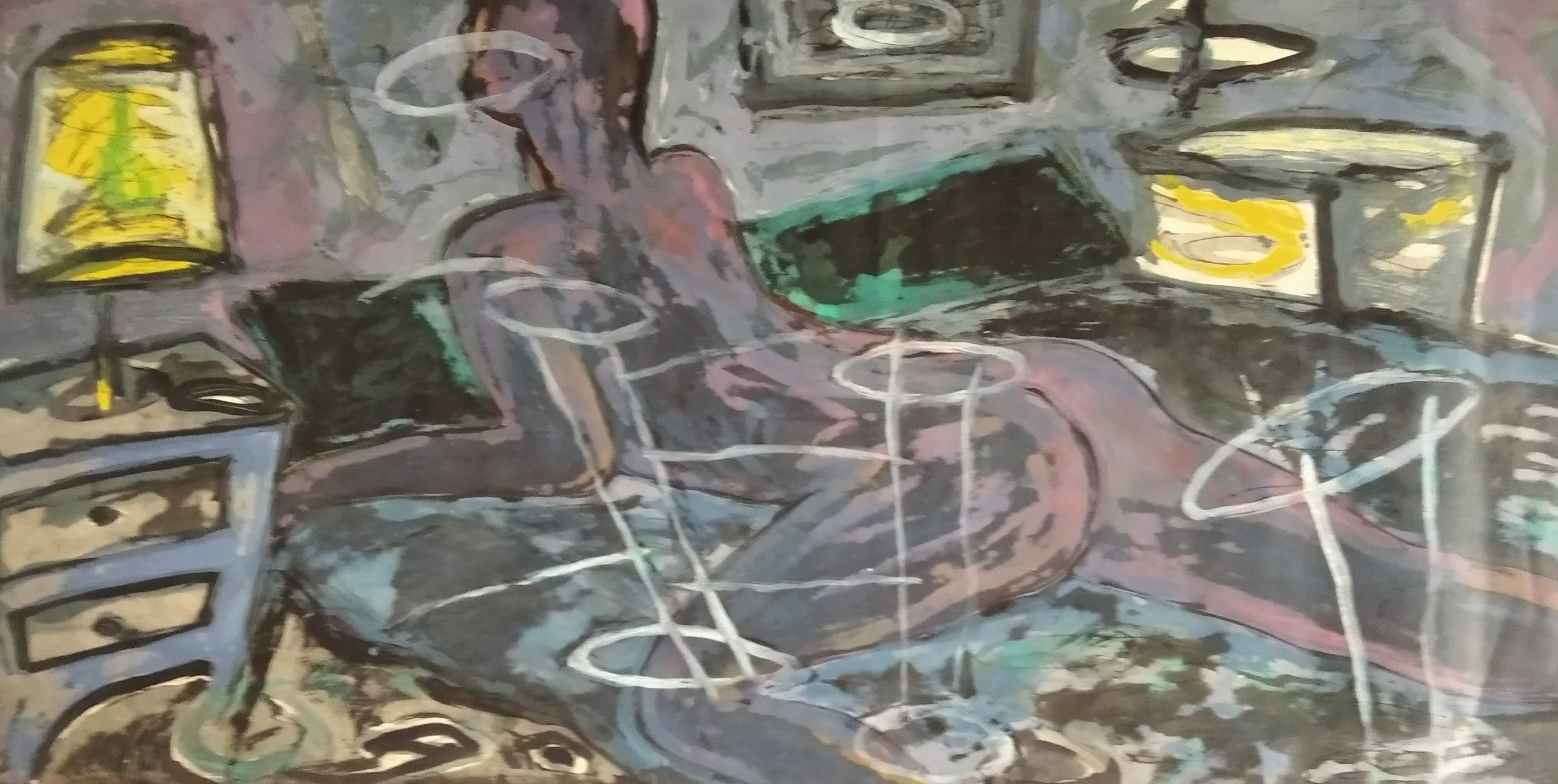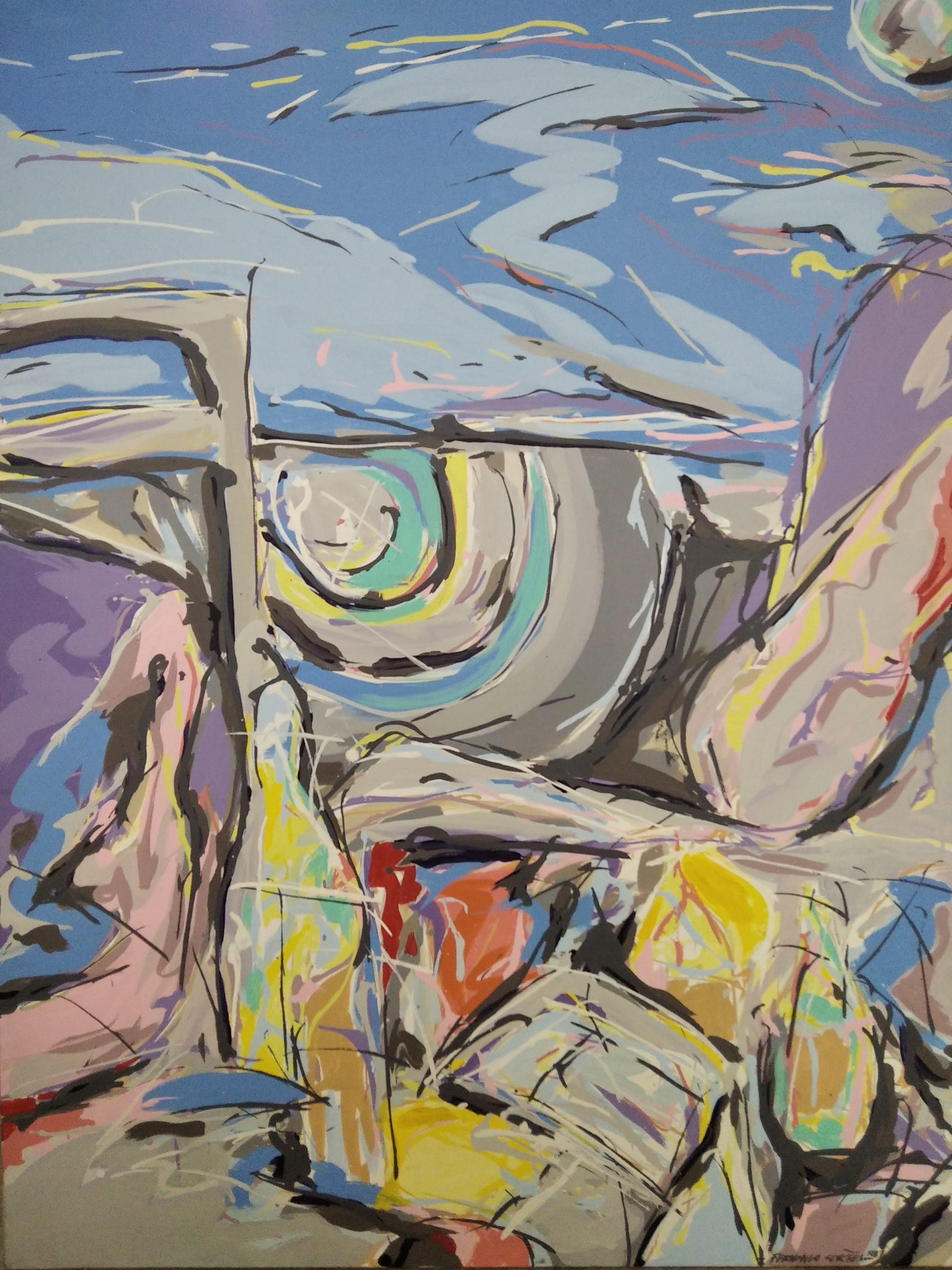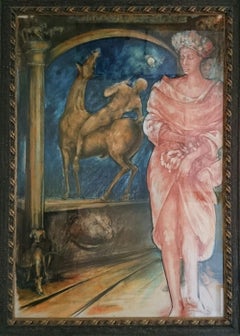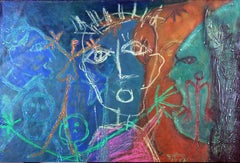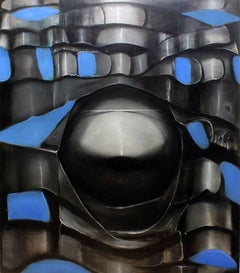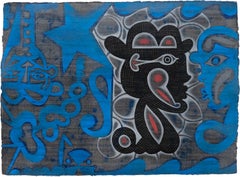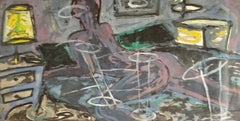Want more images or videos?
Request additional images or videos from the seller
1 of 4
Hugo RivasIn gabbia, 2010 2010
2010
$7,800
£5,831.55
€6,712.71
CA$10,942.64
A$11,916.76
CHF 6,261.56
MX$145,572.13
NOK 77,772.14
SEK 73,544.02
DKK 50,108.30
About the Item
“Making sculpture is a very complex matter. A word added to a form, ultimately helping to better define it. And ultimately helping to understand the whole.”
Ugo Riva is probably the most eminent and affirmed artist represented by the Frilli Gallery.
Riva has been sculpting for more than 40 years now, and is one of the most appreciated living artist in the italian scene at present.
His works in bronze, and lately also in aliminum and ceramic, excavate the dialogue between finished and unfinished.
His most dear subjects are women and angels.
Riva's women, whether dressed or undressed, classically draped or anatomically perfect in their nudity, are always the true object of his adoration. But he does not idolize them, actually he admires and respects women, in all their different ages and attitudes, like in the marvelous bronze work “ The Four Seasons” of a woman life.
Or like in the bronze sculpture “When the sky caresses you”, representing a beatiful and fair young woman standing in equilibrium over life.
His angels are contemporary interpretations of “Winged Victories”, in a reconnecting classic matrix, reproducing an imaginery archeology of modern times, yet in avery sensual way.
His bronzes are always very materic, and this is one of the most emblematic features of his sculptures. You can see the instruments with which he has been working the clay and the was, before proceeding into transforming those forms into bronze. His own fingers, spatulas and knives. One last unmistakable touch, is the add of fresco pigments to the patina with which he treats his bronzes, making his sculpture even more unique when compared to other bronzes.
- Creator:Hugo Rivas (Salvadoran)
- Creation Year:2010
- Dimensions:Height: 39.37 in (100 cm)Width: 55.12 in (140.01 cm)Depth: 2 in (5.08 cm)
- Medium:
- Movement & Style:
- Period:
- Condition:
- Gallery Location:Atlanta, GA
- Reference Number:1stDibs: LU155528598722
About the Seller
5.0
Vetted Professional Seller
Every seller passes strict standards for authenticity and reliability
Established in 2008
1stDibs seller since 2021
18 sales on 1stDibs
Typical response time: 1 to 2 days
- ShippingRetrieving quote...Shipping from: Atlanta, GA
- Return Policy
Authenticity Guarantee
In the unlikely event there’s an issue with an item’s authenticity, contact us within 1 year for a full refund. DetailsMoney-Back Guarantee
If your item is not as described, is damaged in transit, or does not arrive, contact us within 7 days for a full refund. Details24-Hour Cancellation
You have a 24-hour grace period in which to reconsider your purchase, with no questions asked.Vetted Professional Sellers
Our world-class sellers must adhere to strict standards for service and quality, maintaining the integrity of our listings.Price-Match Guarantee
If you find that a seller listed the same item for a lower price elsewhere, we’ll match it.Trusted Global Delivery
Our best-in-class carrier network provides specialized shipping options worldwide, including custom delivery.More From This Seller
View AllSystems I, 1998
Located in Atlanta, GA
Gisela Romero was born in 1960 and was predominantly inspired creatively by the 1980s. The 1980s were an era of increasing global capitalism, political upheaval, worldwide mass media, wealth discrepancies and unique music and fashion, characterised by hip hop and electronic pop music. This had a strong impact on the generation of artists growing up during this decade. The fall of the Berlin Wall at the end of the decade signified the end of the Cold War, yet the era was also marked by the African Famine. During this time influential art movements included Neo Geo, The Pictures Generation and Neo-Expressionism, which took a particular hold in Germany, France and Italy. Artists such as Anselm Kiefer, Jörg...
Category
21st Century and Contemporary Modern Figurative Paintings
Materials
Mixed Media
Untitled
Located in Atlanta, GA
Graduated from the Prilidiano Pueyrredón National School of Fine Arts. He also studied set design, was a student of Osvaldo Attila and Armando Sapia, among other artists.
He held so...
Category
21st Century and Contemporary Modern Figurative Paintings
Materials
Oil
$11,050
No Title
By Cristina TORRES
Located in Atlanta, GA
Colombian-French Artist based in Morocco
Category
21st Century and Contemporary Modern Landscape Paintings
Materials
Oil
$19,500
Miracle ou random
By Hugo Rivas
Located in Atlanta, GA
“Making sculpture is a very complex matter. A word added to a form, ultimately helping to better define it. And ultimately helping to understand the whole.”
Ugo Riva is probably the...
Category
21st Century and Contemporary Modern Paintings
Materials
Pastel
$10,140
Twenty Front
By Carlos Tirado
Located in Atlanta, GA
Carlos J. Tirado (born on April 3, 1964 in Caracas, Venezuela) is an artist, painter and sculptor who has developed a very personal and precise line of work linked to Neo-Pop art. Wi...
Category
21st Century and Contemporary Abstract Abstract Paintings
Materials
Mixed Media
Creador
Located in Atlanta, GA
I was born in Mexico City in 1963 and brought to the United States in the mid 70's, by my parents, when I was 13 years old. I attended my first art class in the late 80's, while at ...
Category
21st Century and Contemporary Modern Figurative Paintings
Materials
Oil
You May Also Like
Sin Título (Untitled)
Located in San Francisco, CA
Gabriel Mendoza
Untitled, 1997
Oil on paper
13.70 x 19.50 inches
This one-of-a-kind painting on paper comes unframed and is signed and dated by the artist.
Years ago, while mournin...
Category
1990s Contemporary Portrait Paintings
Materials
Paper, Oil
OC17
By Agustín Fernández
Located in Mexico City, CDMX
Agustín Fernández (La Habana, Cuba, 1928)
Agustin Fernandez was born in Havana, Cuba, 1928 and died in New York City on June 2, 2006. Fernandez is recognized as an outstanding artis...
Category
2010s Contemporary Figurative Paintings
Materials
Oil
$35,200
Mesitos
By Carlos Luna
Located in Palm Desert, CA
"Mesitos" is an abstract mixed media on paper work by Carlos Luna in 2012. The artwork is 23 1/4 x 31 1/4 inches and 31 1/2 x 39 3/8 x 2 1/4 inches with the frame, weighing less than...
Category
21st Century and Contemporary Contemporary Mixed Media
Materials
Mixed Media
$18,000
Untitled
Located in Barcelona, BARCELONA
The painting is being offered with a work and authenticity certificate
Category
1980s Modern Figurative Paintings
Materials
Paper
Untitled
Located in Barcelona, BARCELONA
the painting is being offered with a work and authenticity certificate
Category
1980s Abstract Paintings
Materials
Canvas
NUBLADO 12, Painting, Acrylic on Canvas
By Jeffrey Davies
Located in Yardley, PA
This is the metamorphosis from a blank canvas to an expression of my desire to create art to bring pleasure to someone--maybe only me!! I am unafraid to try new directions and dimen...
Category
2010s Contemporary Paintings
Materials
Acrylic
More Ways To Browse
Winged Victory
Bronze Skier
Frilli Gallery
Ugo Riva
Angel Of Victory
Vintage Autumn Painting
Churches Impressionist
La Fine Art
Paintings By The Masters
Used Art Supplies
17th Century Dutch Landscape Paintings
Baroque Framed Art
English River Landscape Oil Canvas
Mid Century South African Art
Oil Painting Renaissance
On The Rocks
Painting Brittany
Portrait Of Young Girl
